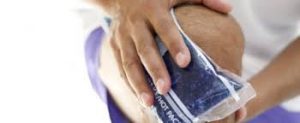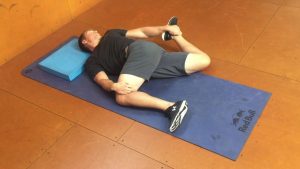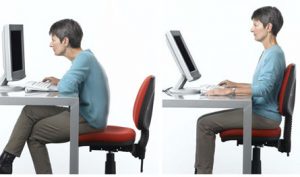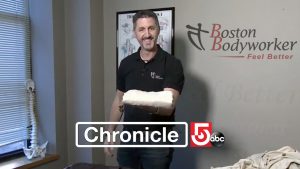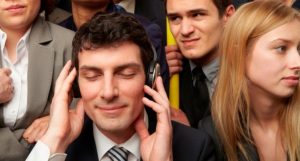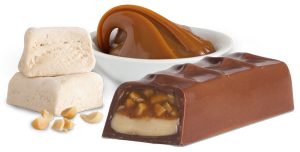What Is the “End Feel”?
Some of the most valuable assessment information is derived from relatively simple procedures such as passive range-of-motion tests. While many massage practitioners have been exposed to the fundamental concepts of active and passive range-of-motion testing, most have not learned how to use this information effectively in a clinical environment.
In this article, we will focus particular attention on the “end feel” that is evaluated during passive range-of-motion testing. Valuable information can be derived from thorough examination of the end feel.
To perform a passive movement evaluation, the practitioner instructs the client to relax as much as possible preceding the movement. It is important to have the greatest degree of muscular relaxation prior to beginning the movement, to improve the accuracy of the evaluation and eliminate muscular effort as the cause of any pain that is felt.
One of the most important factors to investigate with passive range-of-motion testing is the end feel. The end feel is the quality of movement perceived by the practitioner at the very end of the available range of motion. The end feel can reveal a great deal about the nature of various pathologies. James Cyriax, the British orthopedic physician who developed one of the most commonly used systems for physical examination, specified six different end feels when he first described them in his writings.1
Bone to bone – This is the sensation when motion is stopped by two bones contacting one another. An example is the end feel for extension of the elbow.
Muscle spasm – When muscles are in spasm, they may abruptly halt motion prior to what should be the normal range of motion. It is likely that pain will be felt at the end of this range, because the muscle in spasm will be stretched.
Capsular – This is the end feel described for range of motion limited at the end by the joint capsule. The sensation often described is a “leathery” feel to the end of the motion, such as in external rotation of the shoulder. A true capsular end feel occurs when the joint capsule is the primary limitation to the end range of motion. Some authors have called this end feel the “tissue stretch” end feel and extended it to other tissues, such as muscles, that may stretch normally at the end of their range of motion. An example of the tissue stretch with muscles would be hip flexion with the knee held in extension, in which motion is stopped by the hamstrings.
Springy block – This end feel is the sensation of motion stopping short of where it should, accompanied by a rubbery or springy sensation at the end. It occurs most often in joints in which a piece of loose cartilage (like the meniscus in the knee) may be blocking full motion and causing the limbs to “bounce back” a bit.
Tissue approximation – This is the end feel in which motion is stopped by two masses of soft tissue pressing on one another. An example is in flexion of the elbow, in which the elbow flexors and wrist flexors press on each other to limit further motion.
Empty – This end feel has no mechanical limitation to the end of the range, but the client will not let you go any farther because of excessive pain. An example would be in shoulder impingement, in which pain from the supraspinatus tendon being compressed will limit how far the arm can be abducted. Mechanically there is no further restriction, but the pain will prevent the individual from allowing further motion.
The end feel for a particular joint may be the joint’s normal end feel, or it may be pathological in nature. For example, in elbow extension, the normal end feel would be bone to bone as the olecranon process contacts the posterior aspect of the olecranon fossa. If you were performing a passive range-of-motion evaluation with your client and you got a tissue stretch end feel for the elbow in extension, it would most likely indicate some form of restricted range of motion that should be treated.
On the other hand, if you were evaluating medial rotation of the shoulder, you would expect a tissue stretch end feel, and that would be normal for medial rotation. If you performed medial rotation and got a bone- to-bone end feel, it would be abnormal for that joint and would certainly indicate a more serious joint pathology requiring evaluation by another health professional.
Passive range-of-motion evaluation can provide a great deal more information than just how far an individual can move his/her joint. When you know what kind of end feel should be apparent with each joint, you can effectively evaluate and analyze pathological limitations to motion.
Reference
- Cyriax J. Textbook of Orthopaedic Medicine, Volume One: Diagnosis of Soft Tissue Lesions, 8th ed. London: Bailliere Tindall, 1982.
Ready to #feelbetter?
You're just a click away from a wicked good massage!
-

60 Minute Massage Gift Card
$170.00 Add to cart -

90 Minute Massage Gift Card
$255.00 Add to cart -

Mini Aer Small Room Air Purifier
$149.00 Add to cart -
Sale!

Thera-Pearl Sports Pack/Hot Cold
$12.99 Add to cart -

3 Somadome Sessions Gift Card
$135.00 Add to cart -
Sale!

TheraBand® Stretch Strap
$14.99 Add to cart -

20 Minute Somadome Gift Card
$45.00 Add to cart -

TheraBand CLX Connective Loop
$14.99 Select options
Please Hold the R.I.C.E.
Please Hold the R.I.C.E. I have been in the rehabilitation field since 1992. Since the very beginning I was always told that when treating an acute injury you should follow the age old acronym of R.I.C.E. or Rest, Ice, Compression and Elevation. The concept was originally introduced by one of the most respected names in…
Read MoreHave a Brettzel!
Have a Brettzel! In the world of flexibility and stretching, there are a bevy of stretches that have likely been shown to you over the years. It’s hard to remember them if you don’t consistently do them and the ones you likely DO recall are the ones that are probably easiest for YOU to perform.…
Read MoreTake 5: A Stress Break
Take 5: A Stress Break I will be the first in line to inform you of the benefits of a 60 minute massage treatment. However, what if your massage is not scheduled for another week or worse, not even scheduled? Well, as a firm believer and trumpeter of self-care, here is a pretty neat trick…
Read MoreIs it a Muscle Cramp or Muscle Strain?
Is it a Muscle Cramp or Muscle Strain? Last week when my daughter walked in from cheerleading practice, I noticed her limping. When I asked her why she was limping, she went on to explain what I often hear and have seen from my athletes. Having been fortunate to evade serious injuries until this point…
Read MoreWork From Home Hacks!
With so many of you experiencing a new work environment, you are probably starting to notice that many of the chronic aches and pains you had experienced in the past at work on a daily basis, have seemingly disappeared. In their place however, are a new set of sensations we are experiencing due to such…
Read MoreHow to Fold a Fitted Sheet
Have a ‘sheety’ Valentine’s Day! Today is Valentine’s Day, otherwise known to most as a #greetingcardholiday. As I walked out of CVS this morning, I laughed at the people who were fighting for position in the greeting card aisle. Valentine’s Day is about showing love for someone in your life, not elbowing strangers while cursing…
Read MoreHappiness is Contagious
Happiness is Contagious Maybe mom was right. Research suggests that surrounding yourself with friends and family who are happy can actually increase your own happiness. Scientists at Harvard University and the University of California, San Diego, found that emotions, particularly happiness, have a viral effect in how they spread from one person to another. For…
Read MoreDe-stressing the Commute
De-stressing the Commute Turning Road Rage into Road Sage The average American commuter spends an hour a day driving to and from work. During this stressful, stop-and-go time, it’s likely that blood pressure increases, adrenaline begins pumping, and muscles constrict and tighten. By the time you get home, you’re wiped out and grumpy, and you…
Read MoreWhat’s the Scoop on your Poop?
What’s the Scoop on your Poop? Being the father of two girls, I know I have my work cut out for me. I have come to accept that there are lessons that I can teach my children and there are others lessons they will simply have to learn through personal experience. One of the lessons…
Read MoreHalloween Hacked!
Halloween Hacked Check out these simple hacks! Who among us doesn’t love Halloween. If I am being honest, it used to be me! You see, I typically found myself in trouble around this time of year when I was in grammar school. Let’s just say that I wasn’t always motivated to do what was asked…
Read More
